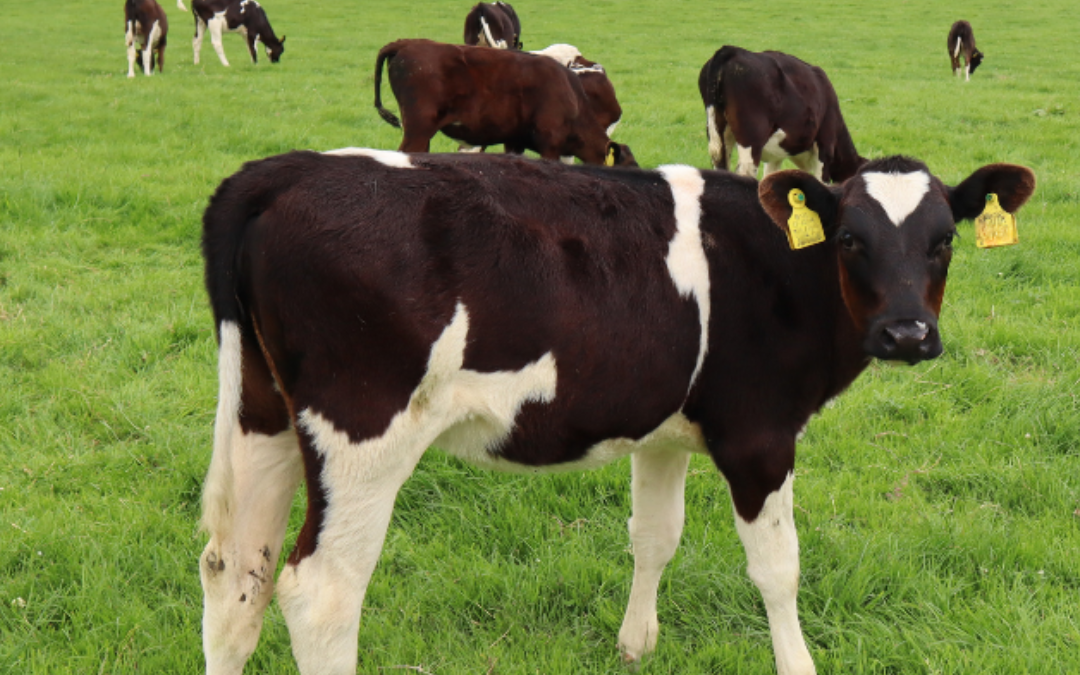Pre-weaning the overall aim was to have doubled our calves birth weight at the point of weaning, and to be ~100 kg at 11-12 weeks before being turned out to grass.
Another target weight to keep in mind with February and early born March calves is to weigh 180 – 190 kgs by the 1st of September, equating to an average daily gain of 0.7-0.8kg/head/day.
In an ideal world calves would be weighed regularly over their first season at grass to track average daily gains. This will allow for informed decision making regarding decreasing concentrate feeding rates at grass. 2kg of a low protein (<16%), high fibre concentrate should be offered while grazing for the first 3-4 weeks of grazing and only considered to be reduced thereafter, to approx. 1 kg. Where early born (Late Jan/Feb born) calves are on target and adjusted to grazing well, supplementation can be reduced further or removed – but this should not happen until late June; supplementation will need to be reintroduced when grass quality declines (late summer) and/or if targets are not being met.
Within groups, there will always be outliers that should be prioritized, calves failing to achieve the above outlined weights (especially younger born March calves). This lighter group needs to be offered a higher rate of supplementation, supplemented for later into the summer and prioritised for grass availability.
Replacement heifers struggling to achieve target weights in the first season at grass, typically results in a heifer too light at housing, and if not fed appropriately and returned to grass early, results in a heifer too light at the point of bulling – negatively effecting her longevity within the herd as a mature cow. With calf-to-beef situations a poor first season at grass will result in prolonged days to slaughter at a significant cost.
Parasite control
Stomach worms and lungworms (hoose) are the most common parasites of calves at grass – with burdens typically building during May-July (weather dependant). Although burdens may be building, clinical signs/symptoms are not experienced or seen typically until mid-summer onwards and this is when action will be required.
Warm humid conditions followed by heavy rainfall can result in rapid multiplication and a close eye will need to be kept on youngstock at grass over the next number of weeks. A dosing protocol should be discussed on a herd-by-herd basis with your veterinary practitioner, as conditions/grazing management & resistance in herds will vary hugely. Dung sampling is also advised to pinpoint issues. Stomach worms will typically present as scouring, and poor thrive while lungworm will need to be dealt with where husky coughing occurs (especially when being moved). Where poor thrive and loose dung is an issue, dung sampling to rule out coccidiosis is also required. It is important that poor thrive caused by parasites is not to be wrongly self- diagnosed as summer scour syndrome.
For further information, contact your local sales advisor


